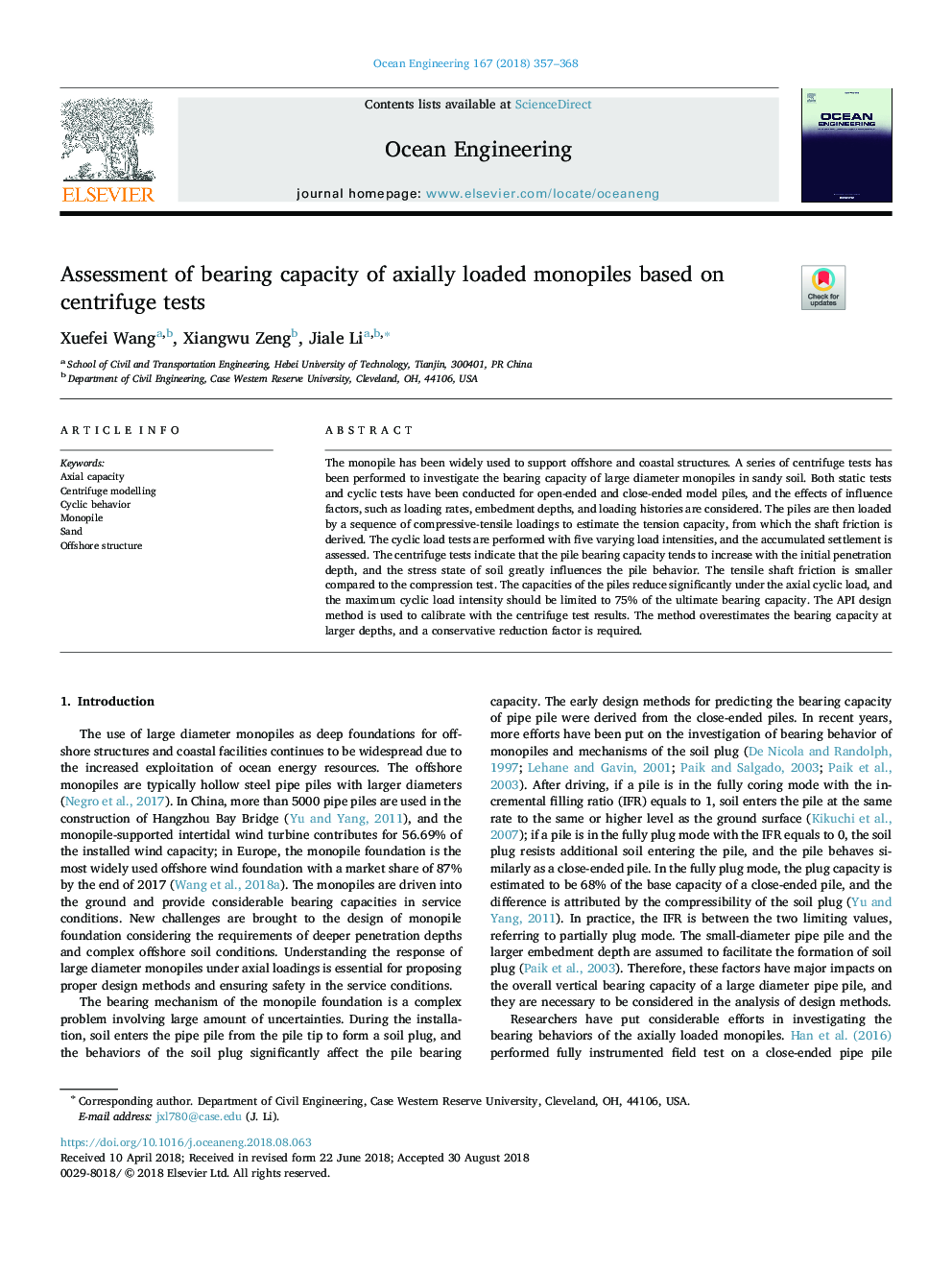| Article ID | Journal | Published Year | Pages | File Type |
|---|---|---|---|---|
| 10136206 | Ocean Engineering | 2018 | 12 Pages |
Abstract
The monopile has been widely used to support offshore and coastal structures. A series of centrifuge tests has been performed to investigate the bearing capacity of large diameter monopiles in sandy soil. Both static tests and cyclic tests have been conducted for open-ended and close-ended model piles, and the effects of influence factors, such as loading rates, embedment depths, and loading histories are considered. The piles are then loaded by a sequence of compressive-tensile loadings to estimate the tension capacity, from which the shaft friction is derived. The cyclic load tests are performed with five varying load intensities, and the accumulated settlement is assessed. The centrifuge tests indicate that the pile bearing capacity tends to increase with the initial penetration depth, and the stress state of soil greatly influences the pile behavior. The tensile shaft friction is smaller compared to the compression test. The capacities of the piles reduce significantly under the axial cyclic load, and the maximum cyclic load intensity should be limited to 75% of the ultimate bearing capacity. The API design method is used to calibrate with the centrifuge test results. The method overestimates the bearing capacity at larger depths, and a conservative reduction factor is required.
Related Topics
Physical Sciences and Engineering
Engineering
Ocean Engineering
Authors
Xuefei Wang, Xiangwu Zeng, Jiale Li,
